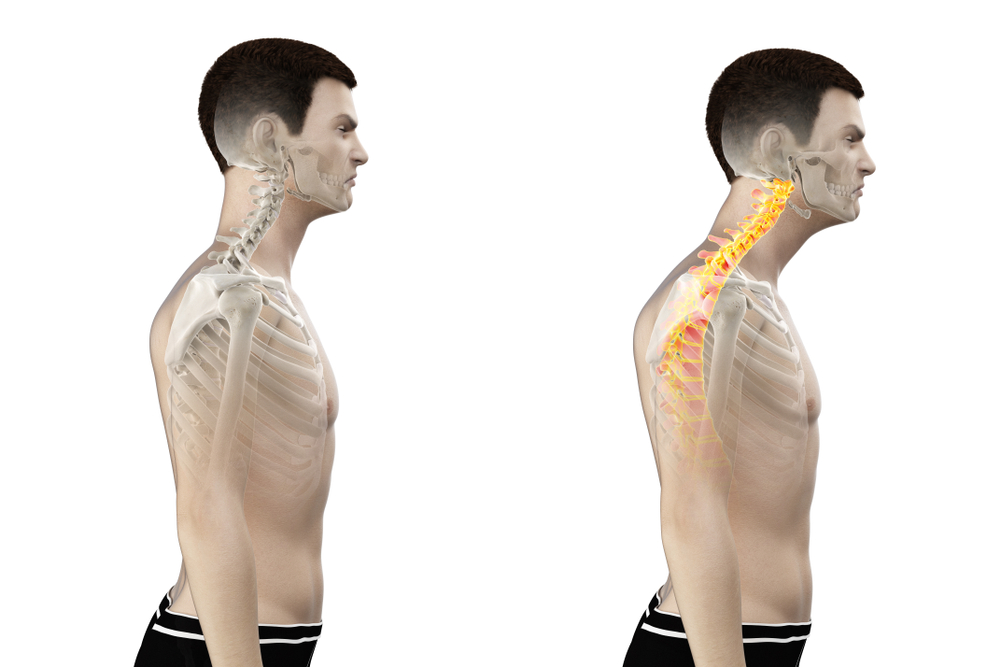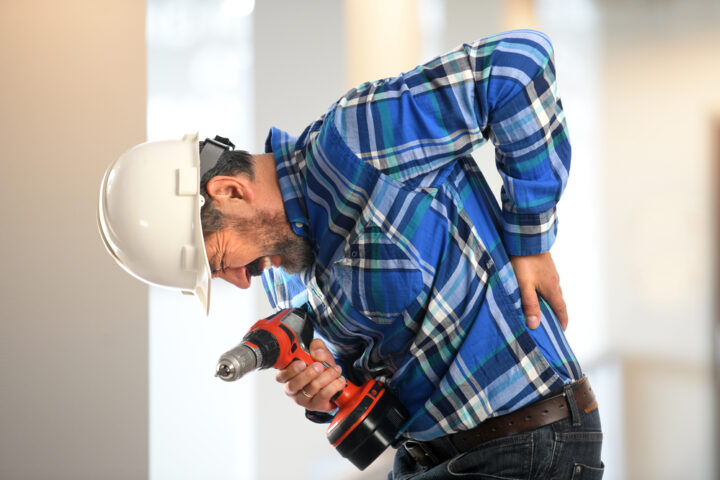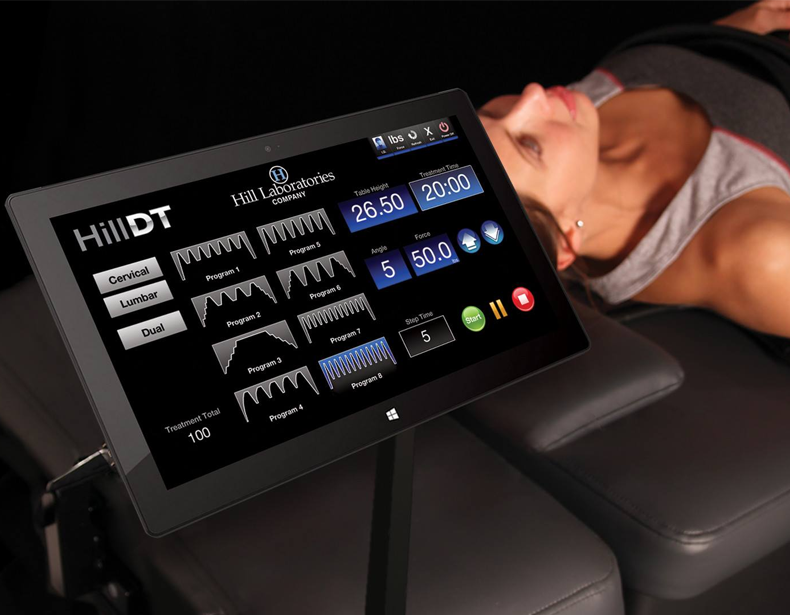Tech Neck is a painful condition caused by looking down at handheld devices, such as the mobile phone. It is also known as Forward Head Posture (FHP).
Unnatural positioning of the head, for long periods of time, causes the muscles to strain to accommodate extra weight. By positioning your head correctly, in line with your spine, your muscles are not required to hold the extra weight.
If you continually look down, you could possibly permanently change the shape of your spine and cause painful spinal issues.
Tech Neck is a growing problem and without education, is likely to escalate in the future.
For example:
- Tech Neck is very unlikely to cause leg pain or sciatica. These symptoms are caused by disc issues in your lower back, and it is extremely unlikely to be the result of a neck condition.
- The first solution for Tech Neck should not be surgery. Surgery should only be considered in very severe cases where all other non-invasive treatments have been tried.
- A way to prevent Tech Neck is not necessarily to limit the amount of time used on your mobile phone. What is more important is how you hold the device, so it does not impact on your posture.
The risk of Tech Neck will be significantly reduced by holding the device so that it does not require your head to bend forward. Either hold a mobile phone up, to be level with your eye line, or raise the position of a computer or tablet to be horizontal with your eye line. This will keep your neck in the correct position to hold the weight of your head without developing an incorrect posture – or Tech Neck.
10 Tips to Prevent Tech Neck
- When sitting at a desk sit in a symmetrical position with both feel on the floor or on a foot stool so your thighs are horizontal at hip level and your back is straight.
- Use a chair with a high back and a head rest where possible. Sit well back into the chair and make sure your back is well supported. Make sure your shoulder blades and head, if using a head rest, are touching the back of the chair.
- Stand up regularly and if possible, use a sit/stand desk. Try to stand in a good upright position, with weight evenly distributed across both feet. Aim for 50/50 standing/sitting.
- Position your computer monitor at just above eye height to retain good head posture. Make sure this position is correct when both sitting and standing.
- Moving around is even better for your spine so aim for the optimum of 30/30/30 standing/sitting/walking.
- When walking uses your eyes to view the ground ahead of you rather than bending forward. Keep your neck tall and your head high.
- Do not look at your hand held device whilst walking but rather stop and hold the device at eye level to view.
- To use a hand-held device, hold or rest the device on something at eye level or as close to eye level as you can and use your eyes to look down rather than bending your head down.
- Sleep on a pillow which supports the space between your shoulders and your head so that your head is lying flat, rather than in a forward position, when lying on your back.
- When watching TV make sure your head is supported in a correct vertical position in relevance to your spine. Use a small pillow in the space between your shoulders and your head to support any non-vertical position.
How to Alleviate the Pain of Tech Neck
Exercise and stretching regularly will help to retain maximum mobility and reduce pain. Move your neck slowly in all directions and give your muscles a break from the one forward position.
Support your head wherever you can with appropriately fitted headrests in cars and office chairs and when watching television or reading a book.
Make sure books are held or balanced at a level where you do not have to bend your head forward to see the page.
Heat packs applied to your neck will ease muscle pain temporarily.
Manual therapy by a qualified practitioner (Osteopath, Chiropractor, Physiotherapist, Myotherapist) can relieve symptoms and increase mobility. Massage is also a good, if temporary, relief for sore muscles.









